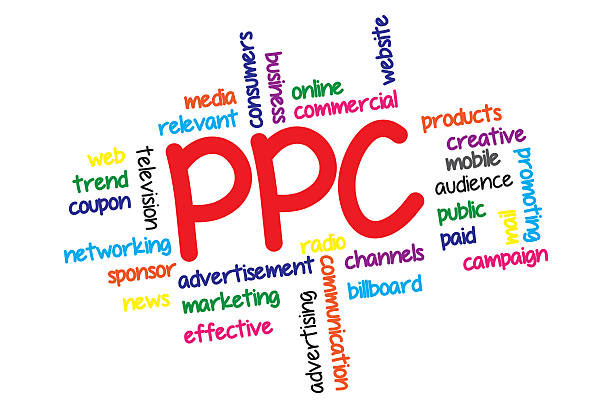Are you pouring significant resources into your Pay-Per-Click (PPC) campaigns but not seeing the results you hoped for? Could the missing link be your landing page optimization? If you’re wondering why some PPC campaigns deliver exceptional ROI while others fall flat, the answer might lie in how well you optimize your landing pages. So, why is landing page optimization crucial for PPC success? Set’s delve into the reasons and explore actionable strategies to make the most of your PPC efforts.
Understanding the Basics of PPC and Landing Pages
Before diving into the importance of landing page optimization, let’s recap what PPC campaigns and landing pages entail. Additionally, PPC is an online advertising model where advertisers pay a fee each time their ad is clicked. Essentially, it’s a way to buy visits to your site, rather than attempting to “earn” those visits organically.
A landing page, on the other hand, is the standalone web page that a visitor “lands” on after clicking your PPC ad. It’s designed with a single focused objective – usually aligned with the call-to-action (CTA) in your ad. However, if your landing page isn’t optimized, you might lose potential customers right at the critical point of conversion.
The Critical Role of Landing Page Optimization
Effective landing page optimization is essential for driving conversions, enhancing user experience, building trust, and maximizing the return on investment for your PPC campaigns.
1. Enhancing User Experience
Have you ever clicked on an ad, only to be greeted by a confusing or unattractive landing page? First impressions matter. Also, a well-optimized landing page provides a seamless and engaging experience that aligns with the user’s expectations set by the ad. So, this helps keep visitors on the page, reducing bounce rates and increasing the likelihood of conversion.
2. Increasing Conversion Rates
What’s the point of driving traffic to your site if visitors leave without taking the desired action? Landing page optimization focuses on elements that encourage users to convert, whether that means signing up for a newsletter, making a purchase, or filling out a form. Additionally, by A/B testing different elements like headlines, images, and CTAs, you can identify what resonates best with your audience and continually improve your conversion rates.
3. Maximizing ROI – Landing Page Optimization
Every click on your PPC ad costs money. Moreover, if those clicks don’t convert into sales or leads, you’re essentially pouring money down the drain. So, optimized landing pages ensure that you get the most bang for your buck by turning clicks into tangible outcomes. This not only justifies your ad spend but also boosts your overall return on investment (ROI).
4. Building Credibility and Trust
Would you trust a poorly designed website with your personal information or credit card details? Likely not. Also, an optimized landing page that looks professional, loads quickly, and is easy to navigate builds credibility and trust with your visitors. This trust can make all the difference when it comes to converting visitors into customers.

Key Elements of an Optimized Landing Page – Landing Page Optimization
Mastering the key elements of an optimized landing page is pivotal in turning visitors into loyal customers by providing clarity, engagement, and a seamless user experience.
1. Clear and Compelling Headlines
Your headline is the first thing visitors see, and it should immediately convey the value proposition of your offer. Also, a clear, compelling headline grabs attention and makes visitors want to learn more. Use powerful words and phrases that resonate with your target audience.
2. Engaging Visuals
Images, videos, and graphics can significantly enhance the appeal of your landing page. High-quality visuals not only make your page more attractive but also help convey your message more effectively. So, ensure that your visuals are relevant and add value to the content.
3. Concise and Persuasive Copy – Landing Page Optimization
Your landing page copy should be concise, clear, and persuasive. Furthermore, focus on the benefits of your offer and how it addresses the visitor’s pain points. Use bullet points and subheadings to break up text and make it easy to scan.
4. Strong Call-to-Action (CTA)
The CTA is arguably the most crucial element of your landing page. It tells visitors what you want them to do next. Make your CTA buttons stand out with contrasting colors, and use action-oriented text that encourages immediate action (e.g., “Get Started Now,” “Download Free Guide”).
5. Social Proof and Testimonials
Including testimonials, reviews, and case studies can provide social proof and build trust with your audience. When visitors see that others have had positive experiences with your product or service, they’re more likely to convert.
6. Mobile Optimization – Landing Page Optimization
With the increasing number of users accessing the internet via mobile devices, ensuring your landing page is mobile-friendly is essential. So, responsive design, fast loading times, and easy navigation on smaller screens are key factors for mobile optimization.

Strategies for Effective Landing Page Optimization
Implementing effective strategies for landing page optimization is crucial for continually enhancing performance, driving conversions, and maximizing the success of your PPC campaigns.
1. A/B Testing
One of the most effective ways to optimize your landing page is through A/B testing. Additionally, this involves creating two or more versions of your landing page with slight variations and testing them to see which performs better. Also, elements to test include headlines, images, copy, and CTAs. Analyze the results and use the insights to refine your landing page continually.
2. Focusing on Load Speed
In today’s fast-paced digital world, users expect websites to load quickly. Also, a slow-loading landing page can frustrate visitors and lead to higher bounce rates. So, use tools like Google PageSpeed Insights to identify and fix issues that may be slowing down your page.
3. Using Analytics – Landing Page Optimization
Utilize web analytics tools to track and measure the performance of your landing page. Metrics like bounce rate, conversion rate, and time on page can provide valuable insights into how users are interacting with your page. Use this data to make informed decisions and optimize your page accordingly.
4. Aligning with Ad Messaging
Your landing page should deliver on the promise made in your PPC ad. Ensure that the messaging, visuals, and overall feel of the landing page are consistent with your ad. So, this alignment helps build trust and reassures visitors that they’re in the right place.
Common Pitfalls in Landing Page Optimization
Avoiding common pitfalls in landing page optimization is essential to ensure that your PPC campaigns achieve their full potential without losing visitors to avoidable mistakes.
1. Overcomplicating the Design
While it’s essential to have an aesthetically pleasing landing page, overcomplicating the design with too many elements can overwhelm visitors. Also, keep your design clean and focused on the primary goal – conversion.
2. Ignoring Mobile Users
With mobile traffic continuing to grow, ignoring mobile optimization can be a costly mistake. So, ensure that your landing page is fully responsive and provides a seamless experience across all devices.
3. Neglecting the User Journey – Landing Page Optimization
Understanding the user journey is crucial for effective landing page optimization. Map out the steps visitors take from the PPC ad to the final conversion, and ensure that each stage is optimized for a smooth experience.

Final Thoughts: Landing Page Optimization
Landing page optimization is not a one-time task but an ongoing process. Additionally, by continually testing, analyzing, and refining your landing pages, you can maximize the effectiveness of your PPC campaigns and drive better results for your business. Lastly, every element on your landing page should serve a purpose – to guide visitors towards taking the desired action.
So, if you’re ready to see your PPC campaigns deliver the ROI you’ve been aiming for, start by optimizing your landing pages. With the right strategies in place, you’ll be well on your way to turning clicks into conversions and achieving your marketing goals.








